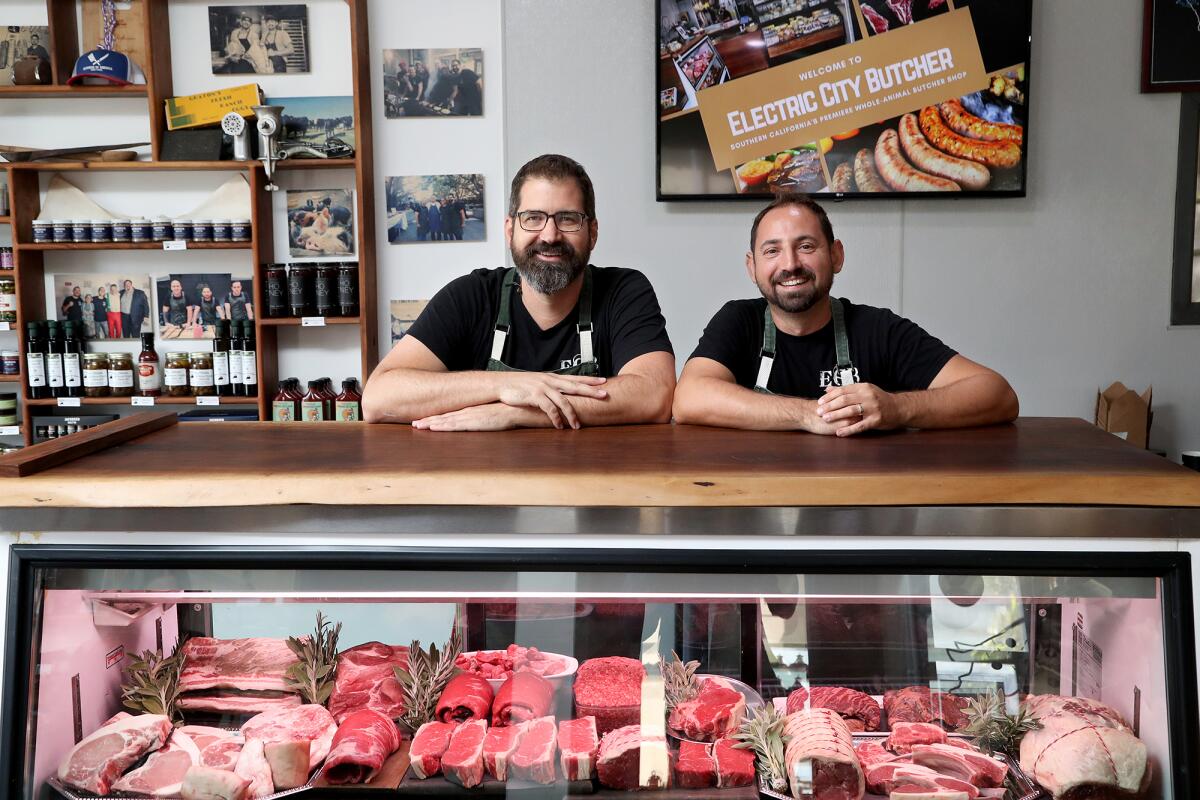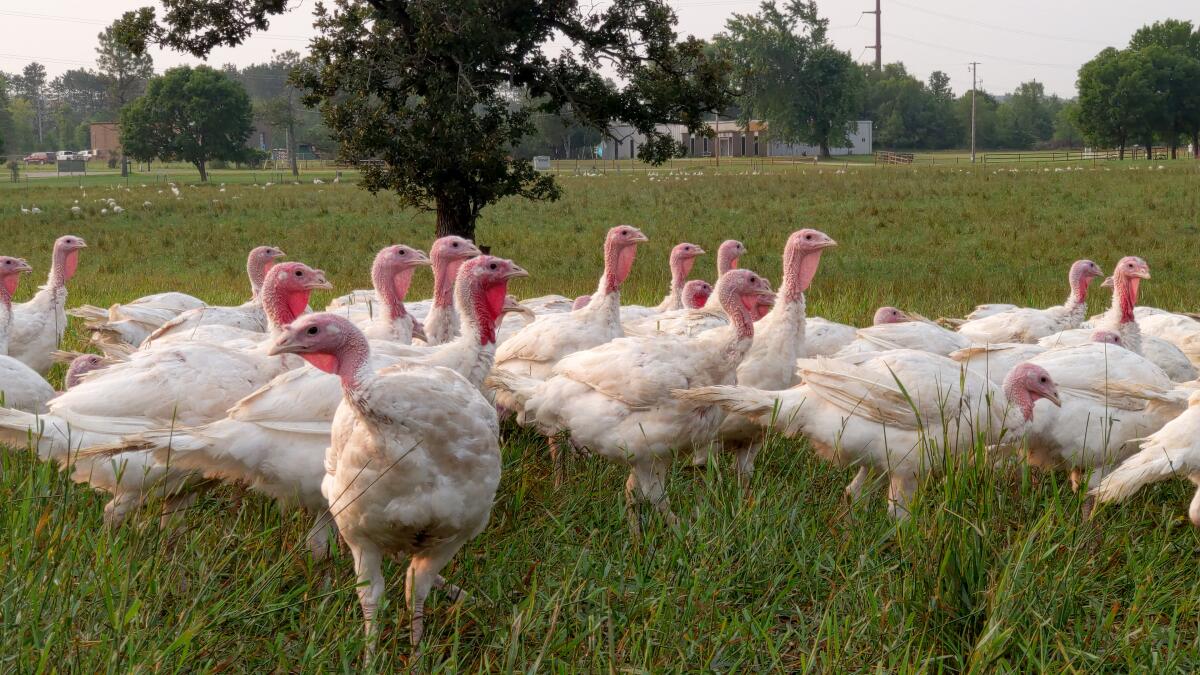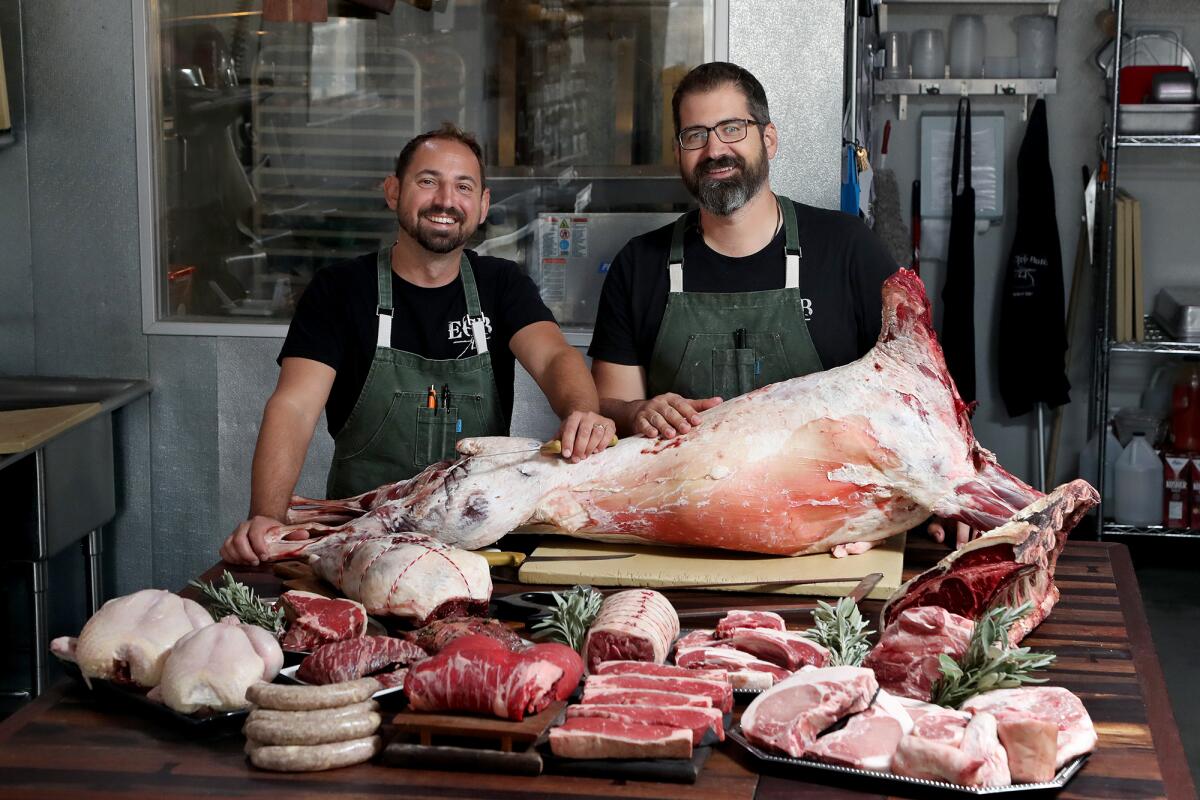The owners of Electric City Butcher talk turkey

- Share via
As the Thanksgiving holiday approaches, you may be asking a lot of questions that involve turkey: to brine or not to brine? How long will it take to thaw? Where does the meat thermometer go?
Electric City Butcher’s Chef Michael Puglisi and partner and chief executive Steve Sabicer suggest you also ask where your turkey comes from.
The owners of the sustainable butcher shop, located at 4th Street Market in Downtown Santa Ana, say they are committed to quality, transparency and the responsible sourcing of meat.
“If we are going to use a buzzword to identify who we are and what we do, it is responsible sourcing,” said Puglisi. “Everything we do is about our responsibility to the community, the farmers and to ourselves.”
Sabicer said that goes beyond certified organic meat.
“Really, organic only looks at the food that the animals are eating and that they are not getting any chemicals that would be unsafe or nonorganic,” he said.
Sabicer describes three legs to responsible sourcing: environmental responsibility, social responsibility and respect for the animal.
“Environmentally responsible farms, in most cases, are not only reducing their carbon footprint, but they are also placing carbon in the soil, they are reversing climate change on their farms,” Sabicer said.

Respect for the animals ultimately means humanely raising them, Sabicer said.
“That means giving them an environment they are naturally evolved to thrive in,” said Sabicer. “That is outdoors, pasture raised, eating food that they ate before we were domesticating them.”
Sabicer points out that pasture raised isn’t the same as free range.
“Free range just means access to open space. People also say ‘cage free.’ You can have a free-range organic chicken that never leaves its cage, and that is actually legal. We don’t do that. Our animals are out in pasture. And they are regenerating that pasture.
“If you look at those pastures before they started using them and if you look at them now, they are lush green pastures that are now nutrient dense and healthy because that is part of this process.”

When roasting your own bird, Puglisi offers this advice:
“Don’t rush it. If you rush it, that is how you end up with a dry turkey,” Puglisi said.
Puglisi recommends a low and slow method, to ensure the turkey doesn’t cook too quickly.
“If you throw it in the oven at 400 degrees and just let it go, you are hitting it with a lot of intense heat, and remember it is cooking from the outside in,” Puglisi said.
Puglisi said you can turn the heat up to 425 degrees after the internal temperature of the bird reaches 160 to 165 degrees to get crispy skin. And remember to rest your finished turkey for at least 45 minutes.
“While your turkey is resting, you have free oven space for almost an hour,” Puglisi said. “That is when you heat up your sides.”
Detailed turkey roasting instruction from ECB can be found at the company’s website, electriccitybutcher.com.
All the latest on Orange County from Orange County.
Get our free TimesOC newsletter.
You may occasionally receive promotional content from the Daily Pilot.




